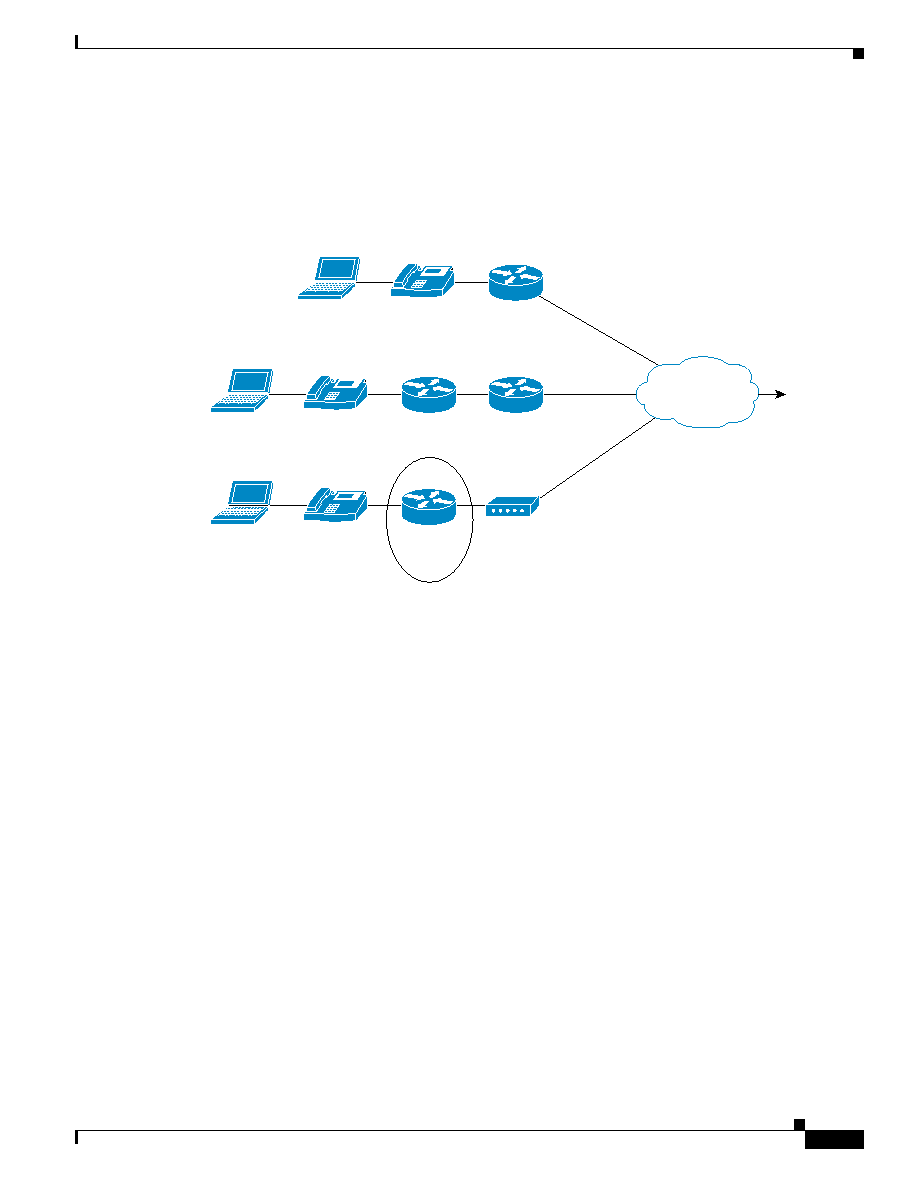
5-9
Cisco AVVID Network Infrastructure Enterprise Quality of Service Design
956467
Chapter 5 QoS in a SOHO Virtual Private Network for IP Telephony
Solutions
Third-Party Modem Solution
illustrates where QoS is required when a third-party DSL modem is used as the DSL
termination device. In this environment QoS cannot be guaranteed.
Figure 5-6
DSL with Third-party Modem
For the third-party modem solution (illustrated in
·
The IP phone handles classification of the VoIP bearer and control traffic. The IP phone marks its
traffic at Layer 2 with a CoS of 5 for bearer traffic and 3 for control traffic. It marks its traffic at
Layer 3 with a DHCP PHB label of EF for bearer traffic and AF31 for control traffic.
·
A Cisco 806 or 1710, or equivalent router, handles scheduling.
·
LLQ/CBWFQ is used to recognize and preferentially schedule VoIP bearer and control traffic in the
direction of the DSL modem.
·
Class-based policing (shaping) is used to rate limit the traffic transmitted towards the DSL modem
to the rate that you are guaranteed from the SP on the DSL link.
There are many factors that are out of our control when you do not directly terminate the DSL
connection.
illustrates the best that can be done in this environment. The biggest issue left
to be resolved in this configuration is the lack of LFI. Packets can be fragmented in the direction of the
DSL modem. However, IOS today does not have the ability to interleave on this segment of the network
so you can not insure that a VoIP packet will not wait for a maximum MTU packet to serialize out the
physical link on the DSL modem. This would introduce a large delay and delay variation into the VoIP
traffic and compromise the voice quality (due to packet loss as a result of jitter buffer under and over
runs).
IP
IP
IP
Two-box
Third-party modem
Single-box
3rd-party
DSL modem
Cisco
806/1710
Cisco 827
PIX 501
DSL
Backbone
To head
end
74923
